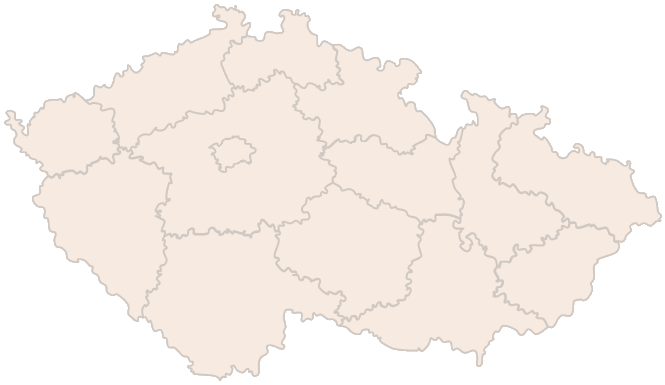The Cadastral Office plays a more important role in everyday life than most people realise. If you want to buy, sell or donate a property, register an easement, deal with a mortgage or just verify the ownership of land, you will always find yourself in contact with the cadastral office. The cadastral offices administer the so-called cadastre of real estate – a public list that represents the legal backbone of property ownership in the Czech Republic.
The Cadastral Office is a key player in helping you protect your rights to real estate. If something is not registered in the cadastre, it is practically the same as if it did not even exist from a legal point of view. The Land Registry Act and the Land Registry Ordinance set out strict rules that must be followed.
What is the cadastral office and what is its function?
The cadastral office is an administrative body that maintains the so-called cadastre of real estate – a public list in which data on real estate, its owners, legal relations and other important circumstances are entered. The office therefore maintains information on, for example, who owns a given piece of land or building, where exactly it is located and whether there is a lien or easement on the property. In addition to the registration of the data itself, the offices also check the accuracy of the submissions, ensure public access to cadastral data and cooperate with courts, bailiffs and municipalities.
Are you solving a similar problem?
Do you need help with a land registry entry?
Are you planning to submit a proposal for entry into the Land Registry but are not sure whether you have the right documents? Avoid unnecessary delays and the risk of rejection. Our law firm will help you with the complete preparation of contracts, the application for registration and communication with the cadastral office.
More information
- When you order, you know what you will get and how much it will cost.
- We handle everything online or in person at one of our 6 offices.
- We handle 8 out of 10 requests within 2 working days.
- We have specialists for every field of law.
What laws is the Cadastral Office subject to
Individual cadastral offices are subordinated to the Czech Office of Surveying and Cadastre (ČÚZK). Their activities are based mainly on the Act on the Cadastre of Real Estate (the Cadastral Act), the Decree on the Cadastre of Real Estate (the Cadastral Decree) and the Act on Surveying and Cadastral Authorities.
The Cadastral Act stipulates, for example, which properties must be registered, what rights are entered in the cadastre, how these rights are entered, how the entry, recording and remarking are carried out, how good faith in the registration is protected or how the correction of errors is handled.
In these processes, then, the following key principles apply:
- The principle of material publicity: everyone has the right to rely on the fact that what is recorded in the Land Registry corresponds to the actual legal situation.
- Principle of incorporation: ownership and other rights in rem are created only by registration in the cadastre (so-called incorporation).
- Publicity of the cadastre: Everyone has the right to consult the cadastre, to obtain extracts or copies from it.
Cadastral Ordinance: details you must not overlook
While the Cadastral Act lays down the basic rules, the Cadastral Ordinance specifies the technical details. For example, the decree specifies the details of the geometric plan, how land and buildings are marked or the formalities of the application for registration.
These formal requirements must be complied with at all times. Failure to do so may result in the application for registration not being accepted or the proceedings being suspended. For example, mistakes are often made in the correct identification of the property or persons (incorrect birth number, missing signatures).
Whether you are buying a house, transferring land to your children or dealing with a mortgage, always ensure that the information is correct, that the formalities are completed and that the application for registration is submitted on time. And if you’re not sure how to do it, take our legal advice – a mistake in registration can have far-reaching consequences.
How is the entry into the Land Registry carried out?
Three basic types of data are entered into the land register:
- Deposit: For example, transfer of ownership, establishment of a lien or easement.
- For example, a leasehold right, a writ of execution, a pre-emption right.
- Note: Warning of facts that may affect legal relations, e.g. disputability of registration, filing of a lawsuit to determine ownership.
Transfer of real estate
People most often encounter the cadastral office when they are dealing with the purchase or sale of a property. If you are entering into a purchase, gift or other contract that changes the ownership of the property, you must propose registration by entry. This is submitted in writing or electronically to the relevant cadastral office. You must attach the contract and other mandatory annexes (e.g. power of attorney, geometrical plan) to the proposal. The procedure is as follows:
- Submitting the application for registration (in writing or electronically). The application is accompanied by the contract itself (purchase, gift, etc.).
- Initiation of proceedings (Section 18 of the Land Registration Act).
- Sealing: This publicly indicates that the property is the subject of proceedings. it “locks” the property against further entries until the proceedings are completed.
- Assessment of the application: the Office examines the formal and material requirements.
- Decision: the Office either makes the entry or stops the procedure (e.g. if the formalities are missing).
The administrative fee is usually CZK 2,000, according to the Administrative Fees Act. Upon successful registration, the right to the property is created, changed or terminated. Therefore, when you buy a property, you become the owner only at the moment of the entry, not when you sign the contract.
Establishment of an easement (e.g. lifetime usufruct)
An easement is a legal instrument that allows one person to use someone else’s property or restricts the owner in a certain direction. A typical example is a life estate – e.g. parents give a house to their children but retain the right to live in it for life.
An easement is created by a written contract, which must specify the property, the designated beneficiary of the easement (e.g., the name and birth number of the person), and the extent and content of the easement (e.g., whether it is a right to use, walk, enter, and to what extent).
The application for the registration of the easement is submitted in a similar way to the transfer of ownership – on a form together with the contract. The entry is made by way of entry – the right is not created until it is registered in the Land Register. Easements are usually registered both in favour of a specific person and in favour of a specific property (so-called real easement).
Attention: if the encumbrance is not registered in the cadastre, it has no legal effect against third parties. It is therefore essential to take care of the registration.
Tip for article
Tip: Do you want to find out if the cadastral office has already made the changes? Or are you wondering if there are any liens on your property? Learn how to consult the cadastre.
Correction of erroneous data in the cadastre
It may happen that you discover an incorrect entry in the cadastre – for example, a misspelled owner’s name, incorrect land area or a wrong unit number. Although it is a public list, it is not infallible. Under the Land Registry Act, you have the right to request that the error be corrected.
There are two types of errors:
- An obvious inaccuracy caused by the authority – for example, a typo in a name, plot or unit number.
- Factual incorrectness, where a right is registered that does not exist or does not correspond to reality – e.g. incorrect registration of ownership.
In the case of an obvious error, it is sufficient to provide evidence of the correction – e.g. a copy of an identity card or other public document. The office is obliged to make the correction without undue delay.
In the case of a factual error, it is necessary to prove the actual legal status – typically by a deed (e.g. a court decision) or a petition for cancellation of the registration. In complicated cases, the cadastral office may require a court decision.
Summary
The cadastral office is a key player in protecting rights to real estate. If something is not registered in the cadastre, it is as if it does not legally exist. The Land Registry Act and the Land Registry Ordinance set out strict rules that must be followed. Whether you are buying a house, transferring land to your children or dealing with a mortgage, always ensure that the information is correct, that the formalities are completed and that the submission is made on time. And if you are unsure, consult a lawyer – a mistake in registration can have far-reaching consequences.




